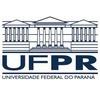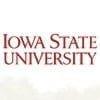Explore all the information on
Swine nutrition
Pigs require a number of essential nutrients to meet their needs for maintenance, growth, reproduction, lactation, and other functions. However, factors such as genetic variation, environment, availability of nutrients in feedstuffs, disease levels, and other stressors may increase the needed level of some nutrients for optimal performance and reproduction.
Swine require six general classes of nutrients: water, carbohydrates, fats, protein (amino acids), minerals, and vitamins. Energy, although not a specific nutrient, is an important nutritional component and is primarily derived from the oxidation of carbohydrates and fats. In addition, amino acids (from protein) that exceed the animal’s requirements for maintenance and tissue protein synthesis provide energy when their carbon skeletons are oxidized. Antibiotics, chemotherapeutic agents, microbial supplements (prebiotics and probiotics), enzymes, and other feed additives are often added to swine diets to increase the rate and efficiency of gain, to improve digestibility, and for other purposes, but they are not considered nutrients.
Pigs require a more concentrated diet and should be fed a less-fibrous feed than cattle, sheep, or horses. As they grow, their nutritional requirements change and the diet should meet their needs in various phases of growth and stages of production.
GuanAMINO® is a creatine source that ensures optimal nutrient utilization and returns over feed cost. Furthermore, it spares metabolic energy and works towards an optimized amino acid metabolism. Not sure why you should add GuanAMINO® to your feeds? Contact your Evonik representative for more information.
...
Comments : 2
Recommendations: 5
Introduction Co-products resulting from the seed of the cotton plant ( Gossypium hirsutum L. ) after oil extraction represent the third protein source available for animal feed worldwide, in accordance with Ash and Dohlman(1), and it is considered an excellent alternative to prepare feed for pigs. However, its application in feeding non-ruminants as a single protein supplementation in diets is limited, due to its high crude fiber. Diets with a high concentration of crude...
Comments : 0
Recommendations: 0
Breno Beirão (Universidade Federal do Paraná, Brazil) commented on the needs of farmers in order to make a successful transition and comply with the current demands of the industry, during IPVS2022 in Rio de Janeiro, Brazil....
Comments : 5
Recommendations: 1
Introduction: Probiotic has been used as an alternative for antibiotic replacement that possesses an antibacterial efficacy using in pig industry. Lactic acid bacteria (LAB) are the important probiotic members used worldwide. However, a limitation of probiotic use is mainly caused by host specificity and appropriateness of geographical difference. Besides, the target of probiotic against enteric pathogens should be considered upon epidemiological evidence. However, there was...
Comments : 0
Recommendations: 0
Dr. Etienne Corrent gave a lecture about Aminoacids in piglets: Tryptophan and Valine at IV CLANA, in São Pedro, SP Brazil,. ...
Comments : 4
Recommendations: 0
...
Comments : 4
Recommendations: 0


Prices Hold, Pressures Build: What’s Moving the Veterinary API Market
Suggested link
Introduction Feed cost represents 70% of the total cost of poultry and pork production (Patience et al., 2015); therefore, a number of processing techniques have been developed to maximize utilization of nutrients in feed ingredients and diets for optimum animal growth performance. Oilseed meals are commonly exposed to varying degrees of heat to remove solvents used during oil extraction, increase nutrient digestibility, improve storage life, and to reduce anti-nutritional...
Comments : 0
Recommendations: 1
...
Comments : 0
Recommendations: 0
...
Comments : 0
Recommendations: 6
...
Comments : 0
Recommendations: 2
We help pig farmers use the most effective swine feed so that they can operate profitably, sustainably and with high animal welfare standards. THE CHALLENGES FACED BY THE SWINE INDUSTRY Pig producers face many challenges, including high feed costs and disease outbreaks. The three biggest pressures come from: 1. Facing the sustainability challenge and the requirement to comply with regulations to reduce nitrogen and ammonia emissions. 2. Coping with...
Comments : 0
Recommendations: 1
Phileo is constantly working to improve its range of yeast probiotics, giving farmers and companion animal keepers effective and consistent products, backed by extensive trials evidence and practical user experience. The...
Comments : 3
Recommendations: 5
Frédéric Vangroenweghe (Elanco Animal Health) speaks on the tests and application of an enzyme (Hemicell HT™) and its economic benefits by lowering feeding costs while maintaining quality, during IPVS2022 in Rio de Janeiro, Brazil....
Comments : 0
Recommendations: 1
Bruno Silva (Universidade Federal de Minas Gerais) explains the need to adapt feeding programs to the characteristics of young and adult sows, during IPVS2022 in Rio de Janeiro, Brazil....
Comments : 0
Recommendations: 3
Bruno Silva (Universidade Federal de Minas Gerais) talks about what needs to be understood about the animal in order to use precision feeding, during IPVS2022 in Rio de Janeiro, Brazil. ...
Comments : 0
Recommendations: 0
Megan Niederwerder (Swine Health Information Center) discusses this method, its advantages, and which situations could call for its implementation, during IPVS2022 in Rio de Janeiro, Brazil....
Comments : 0
Recommendations: 0


Prices Hold, Pressures Build: What’s Moving the Veterinary API Market
Suggested link
Rutger Jansen (Boehringer Ingelheim) discussed strategies to control the disease and its damaging impact, during IPVS2022 in Rio de Janeiro, Brazil....
Comments : 0
Recommendations: 0
Paulo Campos (Cargill) comments on blends of amino acids and how they benefit the animal when faced with sanitary and disease challenges, during IPVS2022 in Rio de Janeiro, Brazil....
Comments : 0
Recommendations: 0
Wes Schweer (Zinpro) commented on organic acids, probiotics and combination of different products, during this Swine It interview with host Laura Greiner....
Comments : 1
Recommendations: 1



























